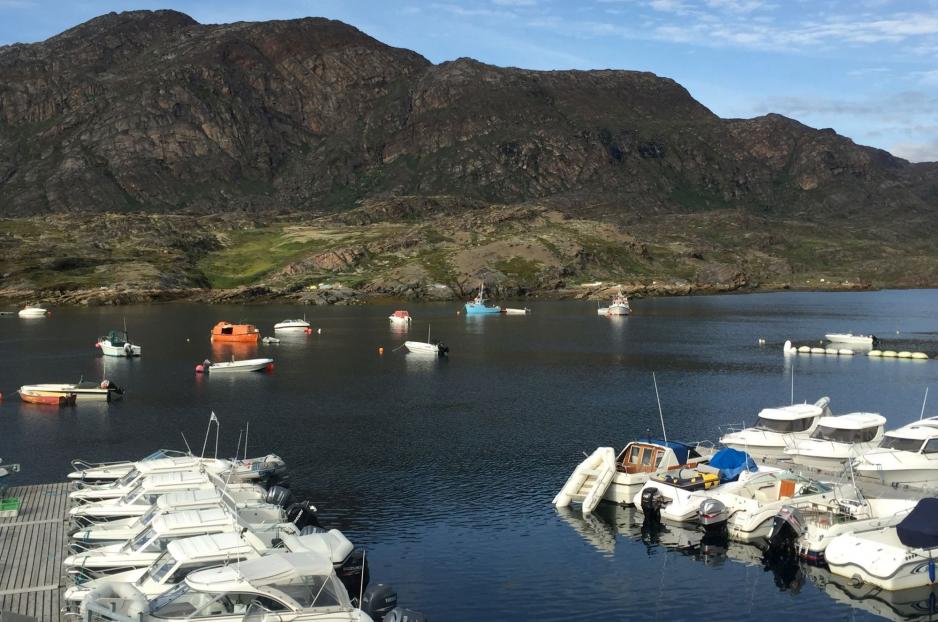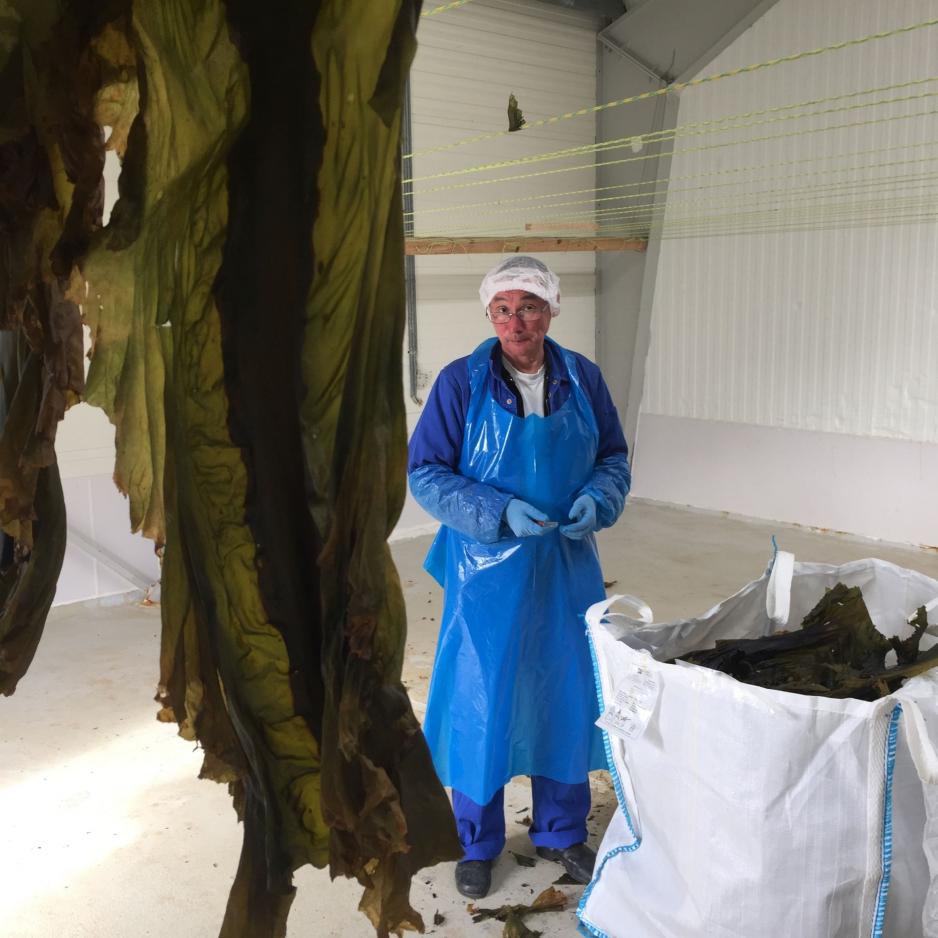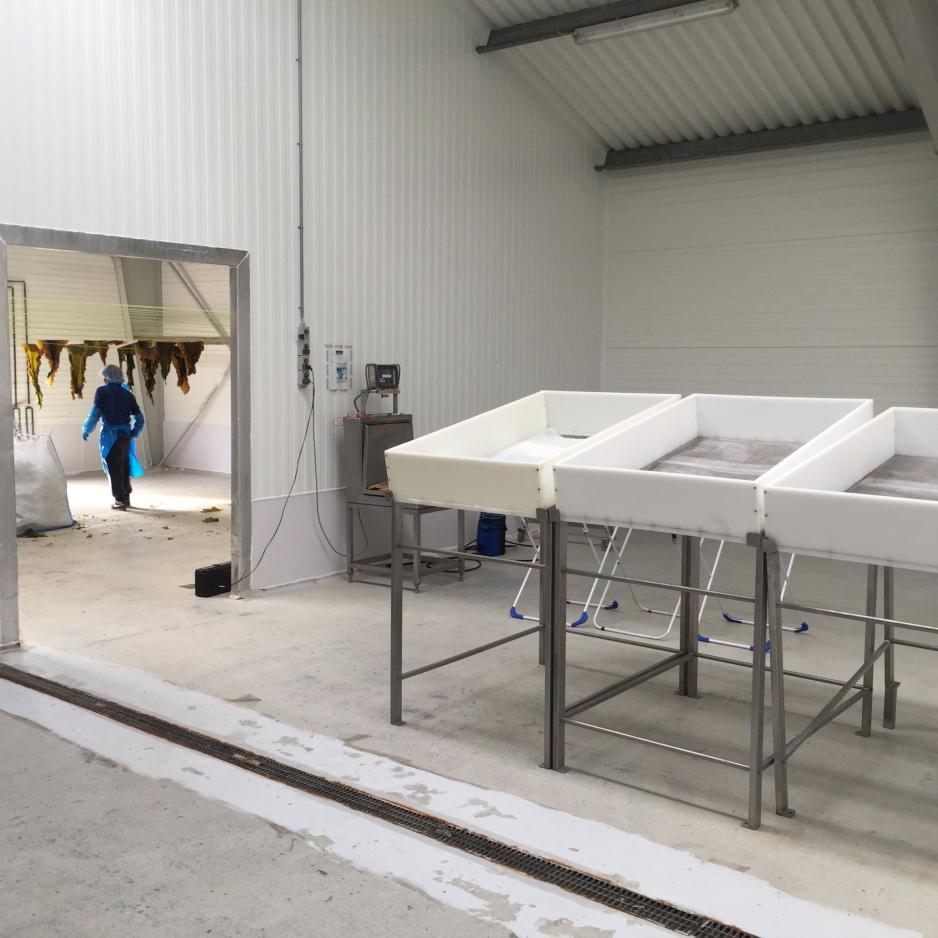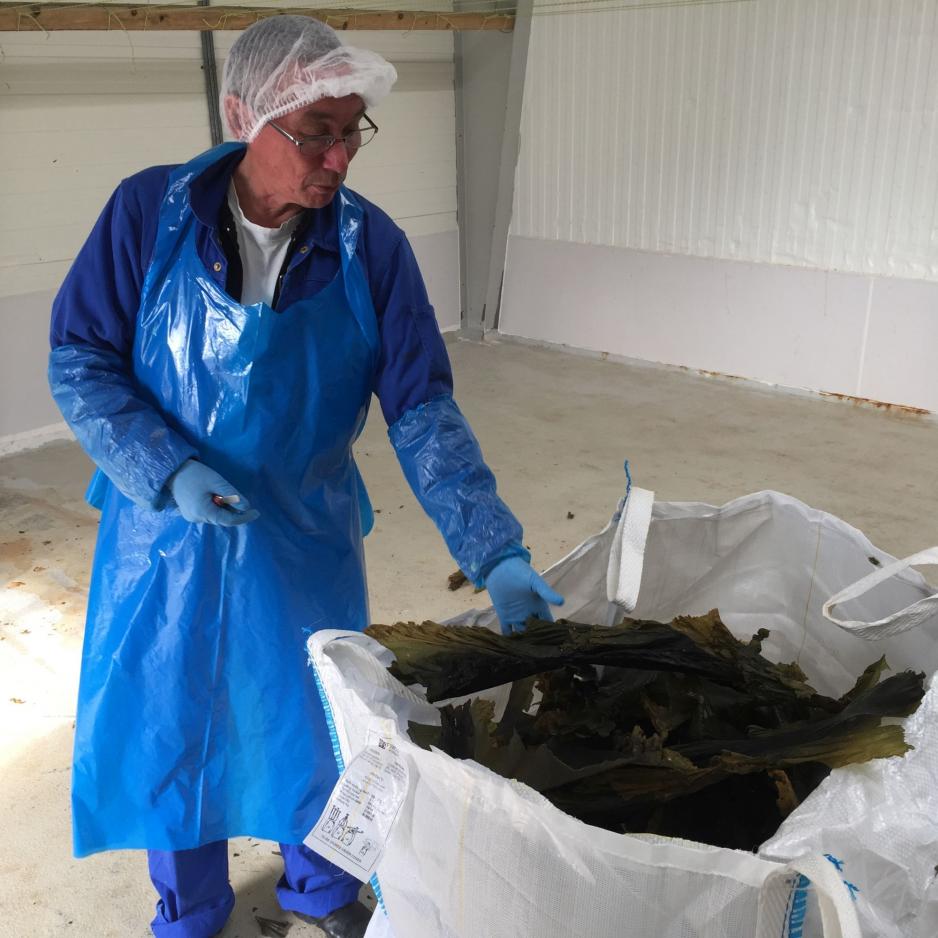Let Them Eat Kelp: Spinning Gold from Seaweed

The thick beds of kelp growing near Sisimiut, Greenland, inspired an enterprising teacher to launch a new business and revive a traditional food. “Meet the North,” a series that ventures into the lives of some of the 4 million people who call the Arctic home, learns about the value of seaweed
SISIMIUT, Greenland: Maki Ulrik Lybert looked over at me from between the fronds of kelp that were drying on rope lines in a small warehouse in Sisimiut, Greenland. The wide ribbons were dark green and almost as long as Maki was tall. "If you want to survive in Greenland, you have to be able to do everything," he said. These days, he's banking on seaweed.
Hundreds of pieces hung from the ropes stretched across the width of the warehouse. Maki and his teenage assistant pulled down the dried kelp, cut away any spots and packed the sheets into stiff fabric bags. The process was astonishingly loud; the sound of the kelp cracking echoed throughout the building.

Maki had been a schoolteacher for more than 20 years when he envisioned a new business centered on seaweed. In Western Greenland, it’s common to have various jobs throughout the course of one’s life, Maki explained to me. There’s a lot of change in the environment and the economy, so it’s good to be a generalist. In 2015, Maki gave up teaching to become an entrepreneur.
Seaweed from the cold water of Davis Strait is clean and plentiful. A couple of times a week during the summer, Maki drives his small boat 15-20km (9-12 miles) away from town and harvests seaweed from the kelp forests that grow from the rocky coast. He drops an anchor and pulls it in, dragging the thick rubbery leaves into his boat. Back in town, he dries it, sorts it, cuts it and sells it: whole pieces of air-dried seaweed.
“It’s simple, but it’s really hard work,” Maki said.

The initial haul, which can weigh as much as 100kg (220lb) per bag, is hard for a team of two to manage. During the drying process, kelp loses more than 90 percent of its weight.
During his first season of production in summer of 2015, Maki experimented with anchors and chains to develop a better harvesting method; for now, he’s settled on a simple boat anchor to bring in the crop.
The beauty of this project is its simplicity. “You don’t have to be hi-tech to do this,” said Maki. Production requires only a boat, a roof, ropes and clean water. “All the rest, nature will do.”
The financial side has also been risky. Maki started this business out of his own pocket, and though he sees potential for economic development in small settlements, he doesn’t yet have government support or investors.
The challenge will be developing a market. At one time, Greenlanders ate these plants as part of their traditional diet, but that is less common now, especially in the bigger towns. While some people in southern and eastern Greenland still eat seaweed, Maki said it has lost popularity as Western food – including junk food – takes over. Maki's marketing approach describes seaweed as a superfood, rather than traditional country food, but there is plenty of overlap between the two.
The majority of Maki's nutritional knowledge comes from the internet. He’s learned about micronutrients, omega fatty acids, vitamins and minerals, information he uses to fuel his passion and his marketing.

He has local customers along with leads in Europe and Korea, where seaweed is eaten as a healthy snack.
Given current trends toward local and organic food production, it’s a product that almost sells itself: all natural from the sea, no chemicals or additives.
Maki credits a seal for the business idea. One day, while hunting from his boat, he came close to a seal that was surrounded by kelp. “Why don't you use all of the seaweed you can see around you?” said a voice in his head. To Maki, the message seemed to come from the seal itself.
That was five years ago. Maki Seaweed aims to harvest and dry hundreds of kilograms of Greenland’s marine flora in 2016.
After a tour of the drying area, Maki brought me into a back room that serves as a kitchen and laboratory to sample some other species of seaweed he is considering for production. The colors ranged from green to brown and purple, and shapes varied from simple leaves to filamentous webs. Some we ate like chips and others we rehydrated. It was salty, chewy and, yes, it tasted healthy.
For now, Maki sells most of his harvest locally. At the grocery store in Sisimiut, 35 kroner (about $5) is enough to buy a packet of Maki Seaweed.
Read the rest of the Meet the North series.
Jennifer Kingsley is the founder and project lead for Meet the North, which is sponsored by Lindblad Expeditions–National Geographic. Follow her northern adventures on Instagram.
This article originally appeared on Arctic Deeply, and you can find the original here. For important news about Arctic geopolitics, economy, and ecology, you can sign up to the Arctic Deeply email list.
